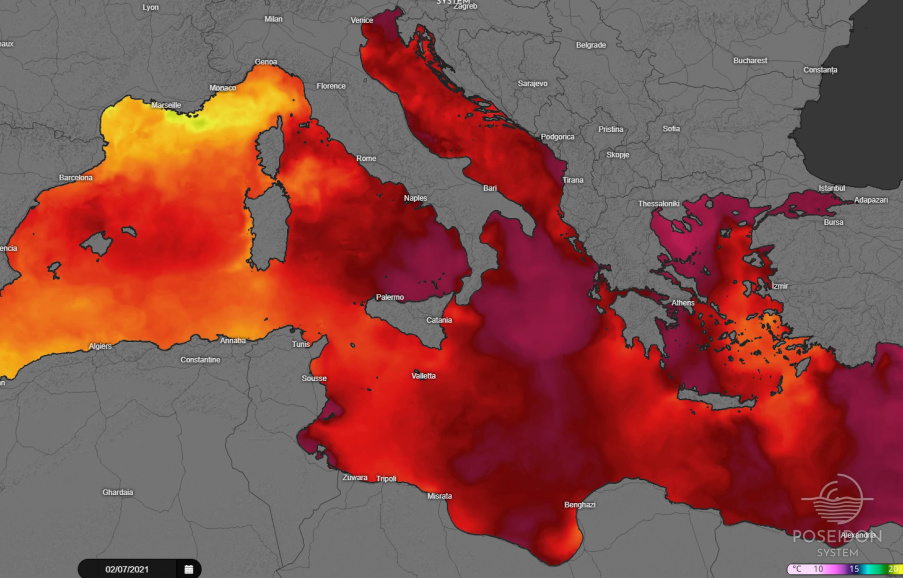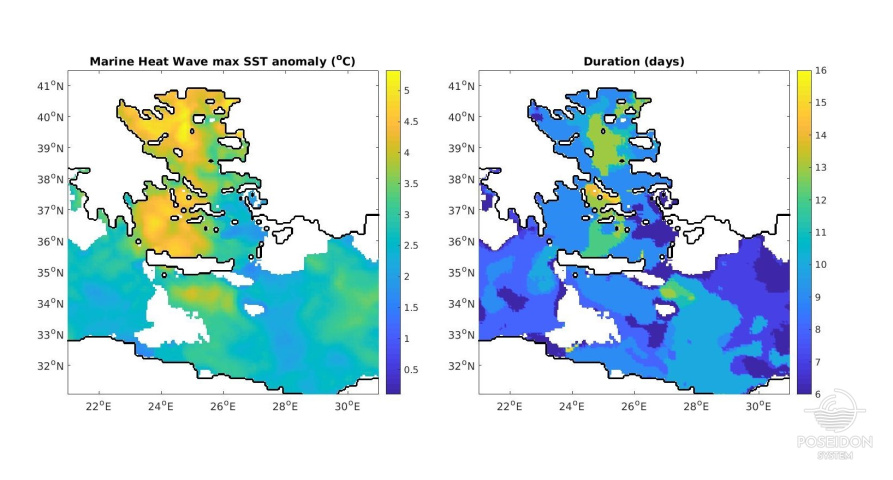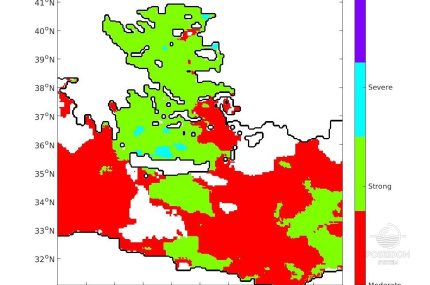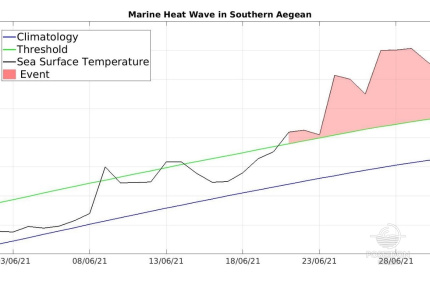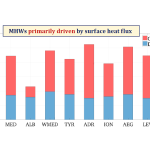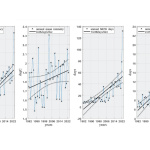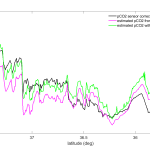Marine Heat Wave in the Aegean Sea in June 2021
Written by D. Denaxa and the POSEIDON scientific team
The strong atmospheric heatwave that took place over Greece during the last third of June 2021 was accompanied by a significant warming of the Aegean Sea, with sea surface temperature (SST) exceeding 28 degrees celsius. Temperature at 1m-depth as recorded by the POSEIDON’s network of buoys and satellite SST observations show that during this time period (18.06.21 – 02.07.21) marine heat waves (MHW) occurred in the Eastern Med and particularly in the Aegean Sea, lasting from 8 to 15 days.
The SST anomalies are computed with respect to the normally expected temperature values (based on historical satellite-derived SST data) and exceed 5 degrees celsius in certain locations, as depicted in Figure 1 with the mapped maximum MHW intensity. In the central Aegean, MHWs appear at 20.06 and last 10-15 days, while in the rest of the areas in this map they appear a few days later, their duration spans from 6 to 10 days and they present smaller SST anomalies compared to the central Aegean. The severity of the phenomenon, as computed from the maximum SST anomalies compared to the normally expected SST for this season (climatology), is presented in the map of Figure 2 with the categorization of the MHW conditions. In this Figure we see that almost the whole Aegean experienced Strong MHW conditions (green color).
Temperature observations from moorings of the POSEIDON network in the Aegean confirm the aforementioned findings. Figure 3 shows the time series of daily satellite SST at the closest location to the POSEIDON’s buoy station northern off Crete. The two datasets are in good agreement, capturing an SST difference from the climatology of 4 degrees at 27 June in this location. The same figure illustrates the identification of the MHW event, based on its definition as a prolonged warming event with SST exceeding for at least 5 consecutive days a threshold computed from the local climatology.
The observed SST increase was favored by the atmospheric heatwave and the weakened winds that also prevailed during this period. In the central Aegean where the most intense MHW conditions took place, a decrease in the heat fluxes from the sea surface to the atmosphere was evident caused by the synergy of the low wind speed and the very high near surface air temperatures. Additionally, the weakening of the wind pattern resulted in decreased vertical mixing which then intensified the near surface stratification of the water column. On the other hand, southeastern of the Aegean where the detected SST anomalies during the event are smaller, wind appears stronger leading to greater heat loss from the sea surface either through increased evaporation or through enhanced mixing with the colder underlying water.
Numerous studies have already reported severe impacts of MHWs in marine biology (habitat loss, massive population shifts) as well as socioeconomic impacts (fisheries, aquaculture). The severity of such episodes is highlighted in recent studies which reveal that MHW frequency of occurrence, duration as well as intensity present increasing trends, strongly linked with the observed global ocean warming.



